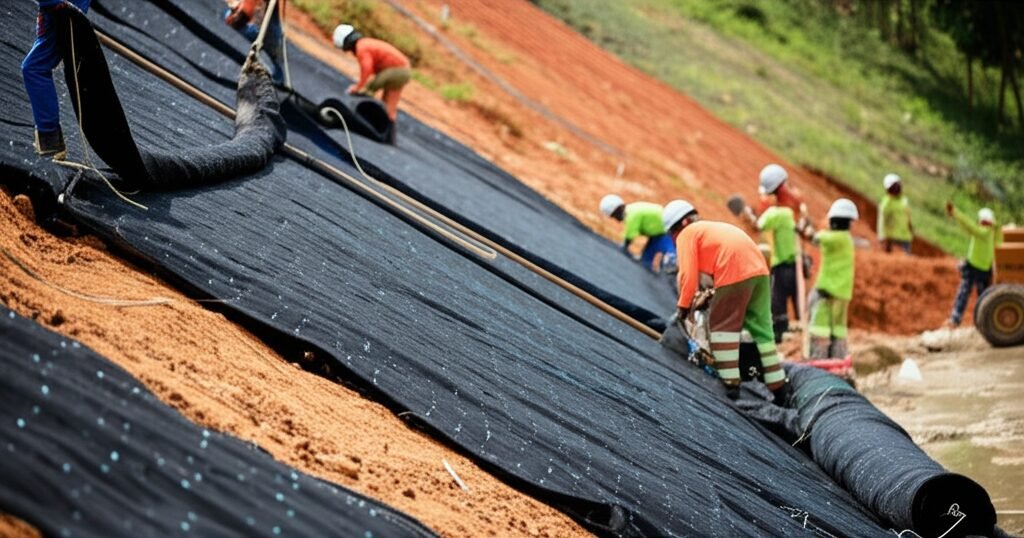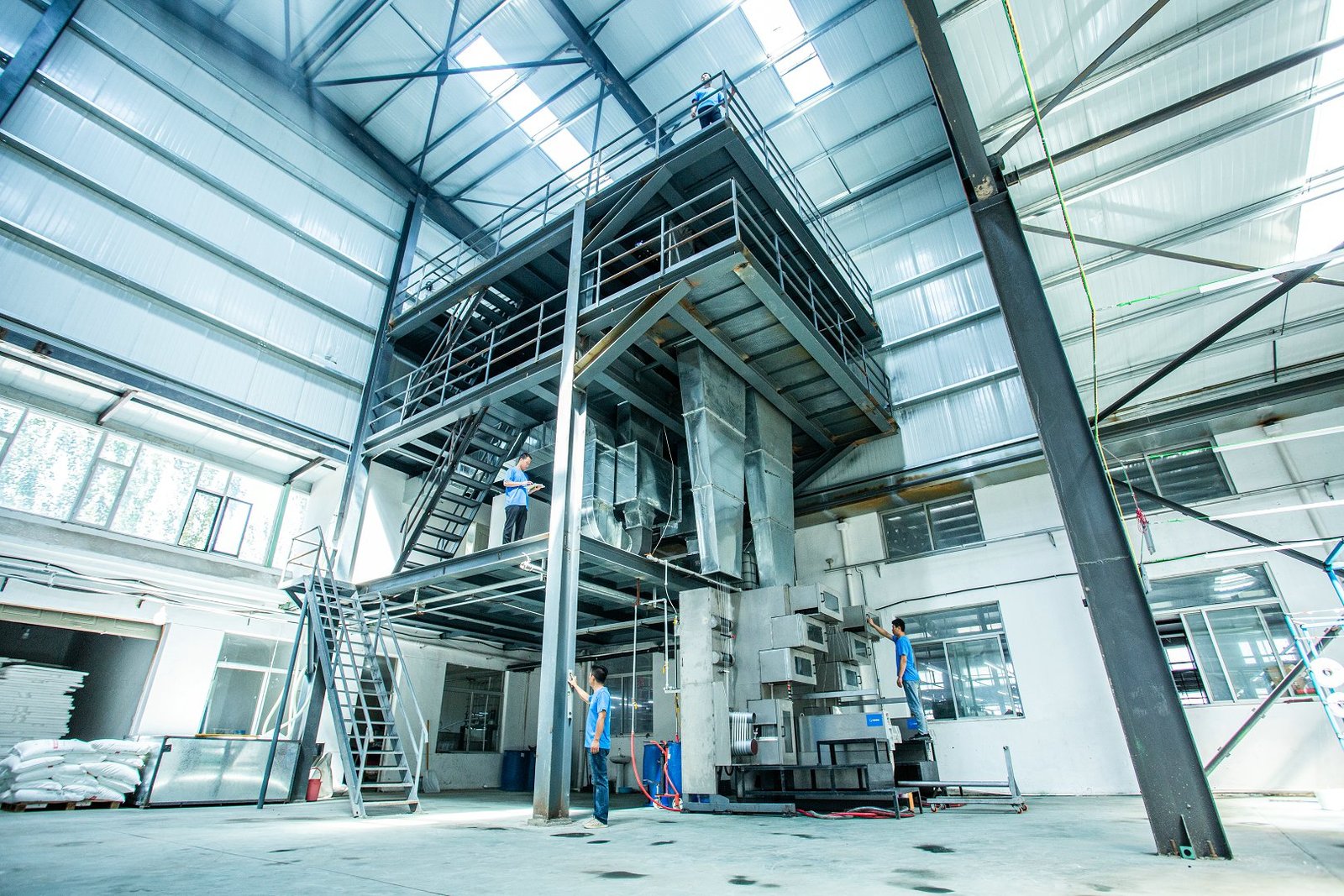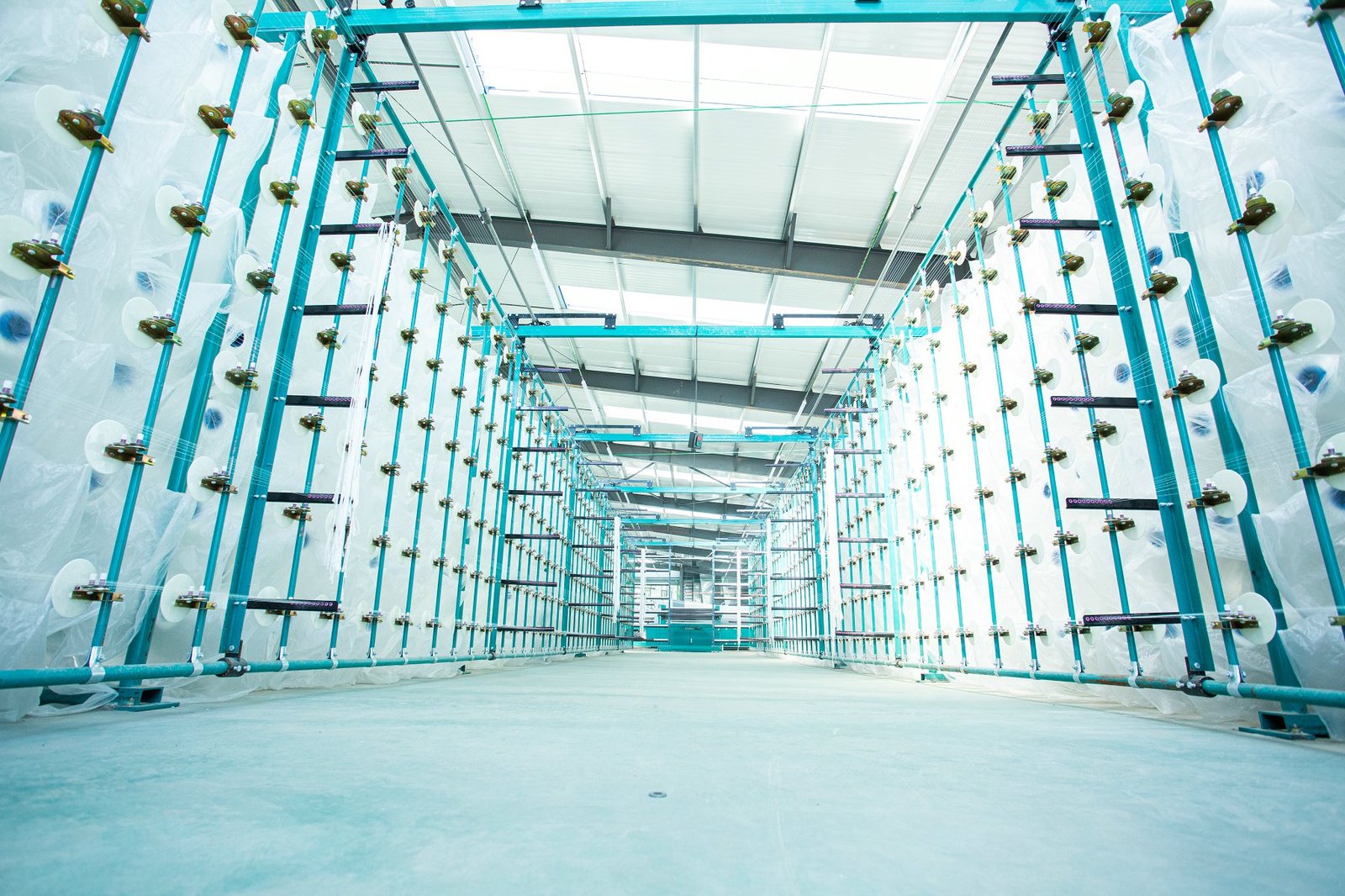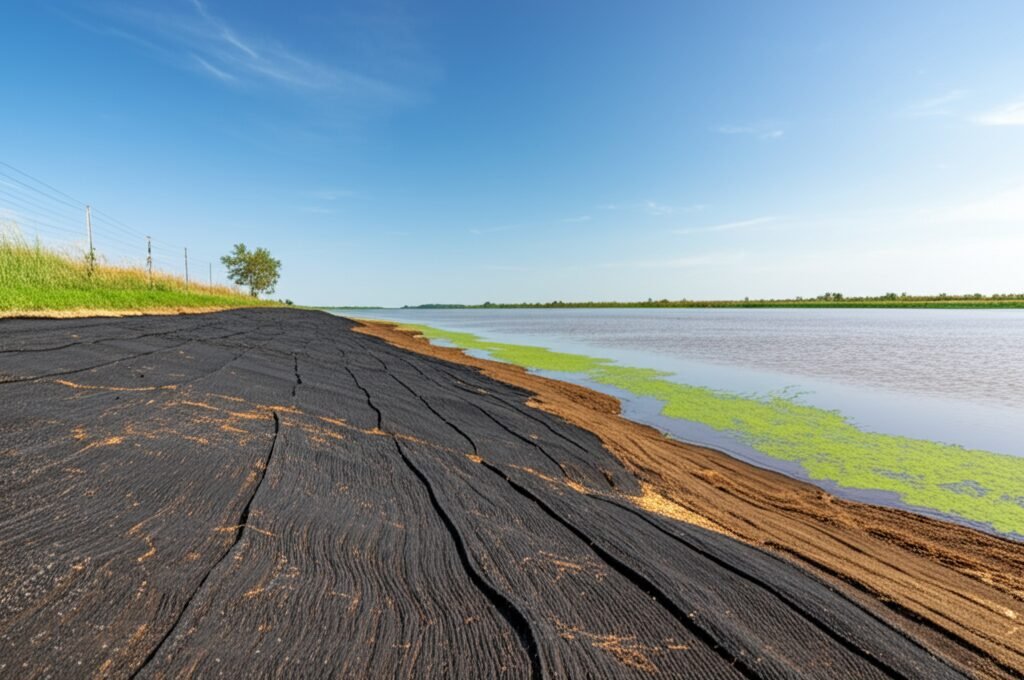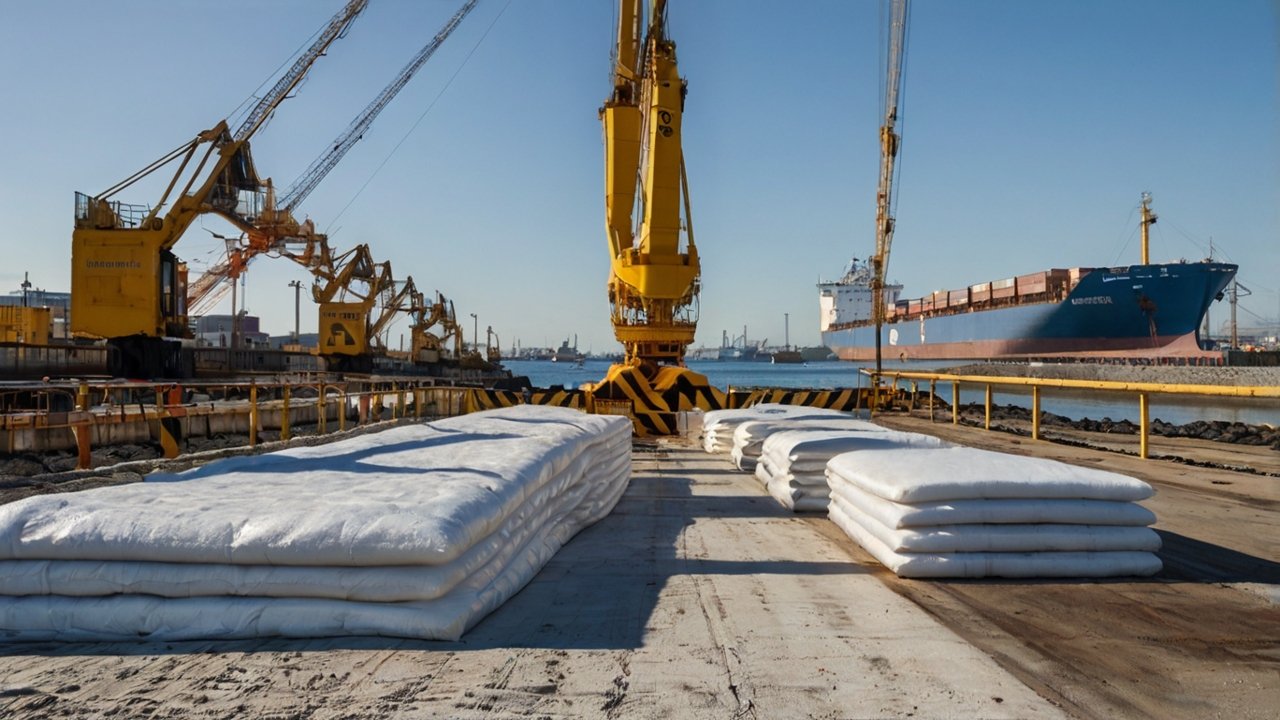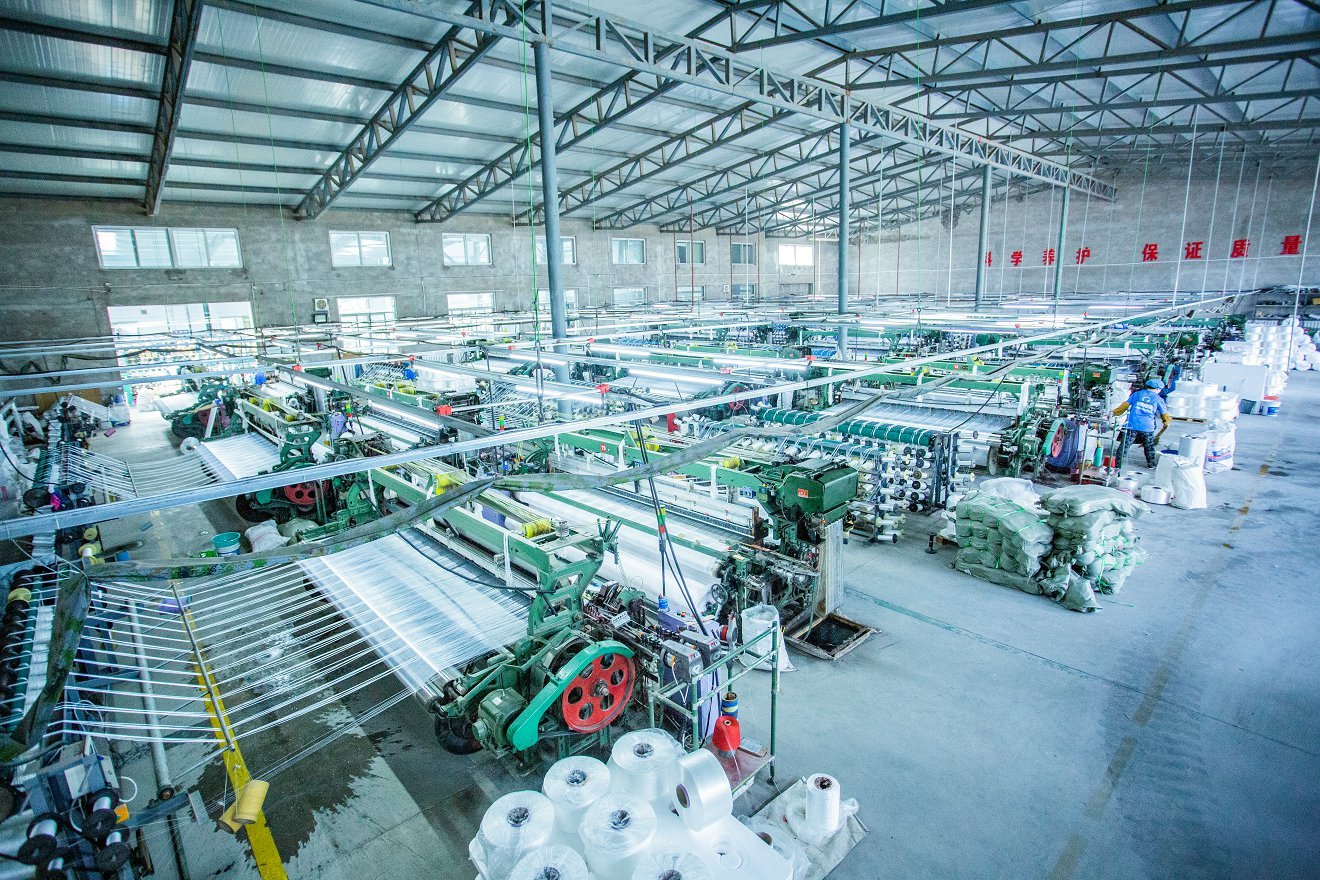Geotextile Mattresses for Riverbank Erosion Control and Stability
Key Takeaways
- • What They Are: Think of ’em like tough fabric envelopes, often filled with concrete or sand, laid over riverbanks.
- • Main Job: They stop the soil on the bank from eroding due to water flow and weathering.
- • How They Work: They let water seep out slowly (filtration) but hold the soil particles back. The weight and structure also adds strength (reinforcement).
- • Big Advantages: More flexible than solid concrete walls, can sometimes be cheaper, and better for plants to grow back compared to just dumping rocks (riprap).
- • Installation: Needs proper ground prep, careful placement, and filling. Getting it right is key.
- • Vegetation: Some types are designed specifically to let plants grow through, making the bank look natural and adding extra root stability.
What are Geotextile Mattresses Anyway?
So, what exactly are these geotextile mattresses we’re talking about for riverbanks? Think of a really tough, specially made fabric – that’s the ‘geotextile’ part. It’s usually made from synthetic stuff like polypropylene or polyester, designed to last ages even when wet or buried. Now, imagine sewing this fabric into a big, flat bag, often with compartments or pockets inside. That’s kinda the ‘mattress’ part. These aren’t for sleeping on, mind you! Their job is serious erosion control. You lay these fabric structures onto a shaped riverbank, and then you fill ’em up. What you fill them with depends on the job, but it’s often concrete grout (like a runny cement mix) or sometimes sand or gravel. Once filled, they create a heavy, stable, but slightly flexible protective layer over the soil.
The whole point is to stop the river from chewing away at its banks, especially during floods or periods of high flow. Water’s powerful, and over time it can undercut banks, causing them to slump and fail, taking valuable land with it and putting nearby structures at risk. These mattresses provide a barrier. They are one of the key tools we use to Transform Terrains with Durable Geotextile Mattresses. The technology behind them has come a fair way; it’s not just simple fabric anymore. You can learn a bit about the Geotextile Mattress Technology: History, Evolution & Benefits if you’re interested in how we got here. It’s moved from basic concepts to highly engineered systems designed for specific flow rates and soil types. We’ve learned alot over the years about what works and what don’t. Simple trial and error, plus some clever engineering, means today’s mattresses are way more effective than the early versions. They gotta be tough enough to handle flowing water, debris impacts, and sometimes even ice, whilst still doing their main job of holding that bank together.
How Do They Actually Stop Riverbanks from Crumbling?
Alright, how does a fabric bag filled with stuff actually prevent a whole riverbank from collapsing? It’s down to a few key things working together. First off, filtration. The geotextile fabric itself is permeable, meaning water can pass through it, but it’s woven or constructed in a way that the holes are too small for most soil particles to get washed through. Think of it like a coffee filter – lets the coffee through, holds the grounds back. When groundwater levels are high in the bank, or after heavy rain, water pressure can build up behind a solid barrier like a concrete wall, potentially pushing it over. With a geotextile mattress, this water can slowly seep out through the mattress fabric, relieving that pressure without washing away the soil. This is super important for long-term stability.
Then there’s reinforcement. The mattress itself, especially once filled (usually with concrete grout for riverbanks), forms a heavy, interlocking layer. This adds considerable weight and structural integrity right onto the bank’s surface. It physically holds the soil in place and resists the scouring forces of the river current. The internal compartments or baffles within the mattress help distribute the fill material evenly and prevent it shifting around, maintaining a consistent protective layer. Some designs, like specialized Techrevetment Formed Concrete Mattresses, are specifically engineered for high-strength applications and can handle some serious flow velocities. They basically create an armored, yet somewhat flexible, revetment.
Finally, there’s separation. In some cases, especially with layered soils, the mattress acts as a clear separator between the vulnerable bank soil and the erosive force of the river. It prevents mixing and keeps the original bank profile intact underneath the protective layer. It’s not just about stopping erosion at the surface; it’s about maintaining the overall stability of that soil mass. Combining these functions – letting water out safely, holding soil in firmly, and adding a strong protective layer – is how these systems provide such effective Expert Geotextile Mattress Solutions for Erosion Control. It’s a more sophisticated approach than just dumping rock (riprap), because it actively manages the water-soil interaction at the bank face. We’ve seen countless riverbanks saved by properly applying these principles; it’s not guess work when done right.
The Nitty-Gritty: Installing Geotextile Mattresses on a River Edge
Putting these mattresses down isn’t quite as simple as chucking a duvet on a bed. It takes some know-how and proper procedure to make sure they do their job right for years to come. If you mess up the installation, you might as well not have bothered, honestly. First step is always site preparation. You can’t just slap a mattress onto any old lumpy, unstable bank. The bank slope usually needs to be graded smooth, to a specific angle that’s stable for the local soil type before the mattress even arrives. Any big rocks, roots, or debris have got to go. Sometimes you might even need to dig in a little at the J or ‘key-in’ the mattress, both at the top of the bank and below the expected scour depth at the bottom (the ‘toe’). This stops the river undercutting the mattress edge later on.
Next comes laying out the actual geotextile mattress fabric. These things can be big and heavy, even empty. They’re often delivered in rolls or large folded sections. You carefully unroll or unfold them down the prepared slope, making sure they lie flat without major wrinkles or folds. Sections usually need overlapping, kinda like roof shingles, to ensure continuous protection, and they need to be secured temporarily with pins or staples so they don’t shift about before filling. Proper alignment is key, especially if you’re dealing with curves in the riverbank.
Then it’s filling time. For most riverbank jobs, this means pumping in concrete grout – a fluid mix of cement, sand, and water. Hoses are connected to fill ports built into the mattress fabric. The pumping has to be done carefully, usually starting from the bottom and working up, to make sure all the compartments fill evenly without trapping air or putting too much stress on the fabric seams. You gotta control the pump pressure. Too much, and you can burst the fabric; too little, and it won’t fill properly. Once filled, the mattress takes on its final shape and weight. If it’s a sand-filled mattress, the filling process is different, often using tremie pipes or similar methods. After filling with concrete grout, there’s a curing period where the concrete hardens, developing its full strength. You can find more detail in guides like the Geotextile Mattress Uses, Construction, Benefits & Installation Guide. Getting the installation spot-on is crucial, as outlined in resources covering Geotextile Erosion Control: Mattress Installation & Benefits. It’s a core part of modern civil engineering practice, you might even see similar techniques discussed in places talking about Understanding Civil Technology. We often see issues arise not from the mattress itself, but from cutting corners during the install – poor grading or improper anchoring are common culprits.
Why Use Geotextile Mattresses Instead of, Like, Just Rocks?
People often ask, “Why go to the bother with these fabric mattresses? Why not just dump a load of big rocks (that’s called riprap) or build a concrete wall?” Fair question. Each method has its place, but geotextile mattresses offer some specific benefits, especially for riverbanks. One of the biggest plus points is flexibility. Unlike a rigid concrete retaining wall, which can crack or fail if the ground underneath settles even slightly, a geotextile mattress, particularly before the concrete fill fully hardens (or if filled with sand/gravel), can conform much better to the shape of the riverbank and accommodate minor ground movements without totally losing its integrity. This is real handy on softer ground or complex bank shapes.
Another key advantage is permeability, which we touched on earlier. Riprap is permeable too, sure, but it doesn’t offer the same fine-particle filtration as a geotextile. Water can seep through the mattress fabric, relieving hydrostatic pressure, while the fabric itself stops soil particles washing out from behind. With riprap alone, especially if not placed on a filter layer, finer soil particles can eventually wash out through the gaps between the rocks, leading to settling and potential failure over time. Geotextile mattresses provide that integrated filter layer right where its needed. You can explore the Advantages and Applications of Geotextile Mattresses in Erosion Control for a deeper dive on this.
Cost can go either way, depends heavily on the site location and availability of materials. Sometimes, importing enough large, suitable rock for riprap can be very expensive, especially for remote sites. Concrete-filled mattresses need cement and sand, but potentially less overall volume of material might need transporting compared to riprap for the same level of protection. There are also other related systems, like the wire-mesh Reno Mattress Plus which is filled with rocks, offering flexibility but a different kind of structure. And while precast blocks exist (you can see examples in a Concrete Mattress Catalog), the in-situ filled geotextile mattress provides that continuous, monolithic (once cured) protection that’s often desired for river flows. Plus, as we’ll see next, geotextile mattresses can be much friendlier to establishing vegetation compared to solid concrete or just plain rock. It’s about picking the right tool for the specific riverbank problem you’re facing.
Letting Nature Back In: Geotextile Mattresses and Vegetation
One of the real neat things about certain types of geotextile mattresses is their ability to work with nature, not just against it. While a plain concrete-filled mattress presents a pretty hard surface, some designs are specifically made to allow and even encourage plants to grow right through them. How’s that work? Well, some mattresses are designed with gaps or openings in their surface after filling, or they might be filled with a mix that includes topsoil, or simply designed such that soil fills the gaps between the concrete ‘pillows’ over time. This creates pockets where seeds can lodge, germinate, and roots can establish.
Why bother letting plants grow on your riverbank protection? Several good reasons. First, aesthetics. A vegetated bank just looks a whole lot nicer and more natural than bare concrete or rock. It blends into the surrounding landscape better. Second, habitat. Plants provide food and cover for insects, birds, and other wildlife, helping to restore some of the ecological function that might be lost when a bank is heavily engineered. Third, and maybe most importantly from an engineering view, added stability. Once plant roots establish through and under the mattress, they help bind the soil together even more effectively. This root matrix adds significant shear strength to the upper soil layers and can even help anchor the mattress itself more securely over the long term. It’s like getting free, self-repairing reinforcement!
There are specific products sometimes called Advanced Vegetation Geotextile Mattress Systems for Slope Stability that are optimized for this. They might use a particular fabric type or have a specific structure designed to retain moisture and soil in the crucial early stages of plant growth. Often, after installation, these types of mattresses are hydroseeded or planted with native species suitable for riverbank environments. It’s a brilliant way to get the immediate erosion protection of the mattress structure, plus the long-term benefits of a naturally vegetated slope. Compared to traditional ‘hard’ armoring solutions, it’s seen as a ‘softer’, more environmentally friendly approach that combines gray infrastructure (the mattress) with green infrastructure (the plants). I’ve seen projects where, after a few years, you can barely even see the mattress structure anymore, it’s just a lush, stable, green riverbank doing its job perfectly. It takes a bit more planning maybe, selecting the right plant species and ensuring conditions are right for establishment, but the payoff in terms of environmental integration and long-term performance can be huge.
Real-World River Fixes: Geotextile Mattress Project Examples
Theory and lab tests are one thing, but where do these mattresses really prove their worth out in the messy real world of flowing rivers? They get used in all sorts of situations, but they particularly shine in a few key areas. Think about the outside bends of rivers. The water flows fastest here, hitting the bank with the most force. This is often where erosion is worst. Geotextile mattresses, especially the concrete-filled ones, provide a tough, continuous shield against this constant attack, preventing the bend from migrating outwards over time. They’re also great around bridge abutments and piers. Flow patterns get complicated around structures like bridges, often causing localized scour (erosion). Wrapping the banks and sometimes even the riverbed near these structures with mattresses protects their foundations from being undermined.
We also see them used extensively in man-made channels or canals, where maintaining a specific cross-section and preventing bank degradation is crucial for navigation or water conveyance. Their smooth surface (compared to riprap) can sometimes even improve hydraulic efficiency – meaning water flows better. You can find examples of Proven Geotextile Mattress Projects for Water Infrastructure that showcase these kinds of applications. Seeing these Successful Erosion Control Projects with Geotextile Mattress Applications really builds confidence in the tech. One tricky situation I remember involved a riverbank right next to a critical railway line. Traditional methods like riprap would have required massive amounts of rock and significant disruption. We opted for a concrete-filled geotextile mattress; the installation footprint was smaller, faster, and we could get protection right up to the railway embankment safely. The flexibility of the mattress also helped it conform to the slightly uneven bank profile left by previous minor slips. Years later, that bank is still solid as a rock, well, solid as grout-filled fabric anyway! Challenges often involve access – getting equipment and materials like concrete to the river edge can be tough. But the adaptability of the mattress system often makes it workable even in tight spots.
Looking Beyond Rivers: Where Else Do These Mattresses Pop Up?
While we’ve been focusing on riverbanks, it’s worth knowing that these geotextile mattresses aren’t just a one-trick pony. Their ability to stabilise soil and prevent erosion makes them useful in a bunch of other places too, especially where water meets land. A big one is coastal protection. The constant energy of waves crashing on shorelines causes significant erosion. Geotextile mattresses can be used to build revetments, groynes, or even as foundation layers under breakwaters to protect beaches and coastal properties. The principles are similar to riverbanks – filtration, reinforcement, separation – but the forces involved (wave impact, tidal currents) are different, so the specific design and installation methods might be adjusted. There’s quite a bit of focus on the Effectiveness of Geotextile Mattresses for Shoreline Erosion and Coastal Stabilization.
You’ll also find them used for lining drainage channels and spillways around dams or reservoirs. Here, they prevent erosion during high-discharge events, ensuring the channel keeps its shape and capacity. They can be used on steep slope stabilization projects even away from water, sometimes filled with soil and seeded to provide surface protection against rainfall erosion while vegetation establishes. Another important application is pipeline and cable protection. When pipelines or cables have to cross rivers or seabeds, mattresses are often laid over them to provide ballast (weight to hold them down) and protect them from anchor drag, currents, or other physical damage. There are even specialized Polymeric Marine Mattresses designed specifically for these tough underwater jobs.
Basically, anywhere you have vulnerable soil meeting moving water or needing surface protection, there’s a good chance a geotextile mattress solution might be suitable. Their versatility is a major strength. Seeing them in production, like in the image above showing industrial production, gives you an idea of how established this technology is across various civil engineering sectors. It’s not just a niche product for rivers; it’s a broadly applied tool for managing erosion and stability in many different environments.
Frequently Asked Questions (FAQs)
Q1: How long do geotextile mattresses last?
A: Depends loads on the environment (flow speed, debris, UV exposure if uncovered) and the specific materials used, but generally, they are designed for long service lives, often decades. The synthetic fabrics are very durable, and concrete fill is obviously long-lasting. Proper installation covering the Geotextile Mattress Uses, Construction, Benefits & Installation Guide is key to longevity.
Q2: Are they bad for fish or river life?
A: Compared to solid concrete walls, they can be better. The permeability allows some water exchange, and if you use vegetation-friendly types like Advanced Vegetation Geotextile Mattress Systems for Slope Stability, they provide habitat. However, any bank hardening changes the natural river edge, so there’s always some impact. Careful design aims to minimize this.
Q3: Can they be repaired if damaged?
A: Minor damage, like small tears in the fabric before filling or localized damage to a filled section, can sometimes be patched or repaired, especially with concrete-filled types. Large-scale damage might need sections replaced. Regular inspection helps catch problems early.
Q4: Are they expensive compared to other methods?
A: It varies. Initial material costs might seem higher than simple riprap sometimes, but installation can be faster or require less heavy equipment, potentially saving money there. And they might last longer with less maintenance than poorly installed riprap. You gotta look at the whole life-cycle cost for a specific project. Check out the Advantages and Applications of Geotextile Mattresses in Erosion Control for more cost-benefit points.
Q5: Can you walk on them once installed?
A: Concrete-filled ones, once cured, are usually strong enough to walk on carefully. Sand-filled ones might be softer. They aren’t really designed as walkways though, their main job is erosion control.
Q6: Do they work on really steep riverbanks?
A: Yes, they can be used on steep slopes, but the bank needs to be stable before installation (proper grading is vital). Anchoring at the top becomes even more critical on steep banks. There are limits, of course; near-vertical banks might need a different solution like a retaining wall.


